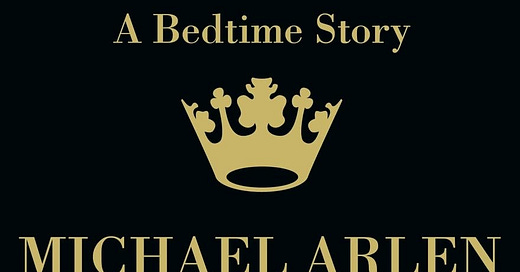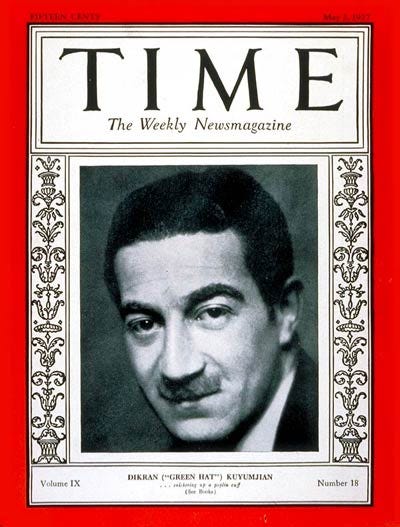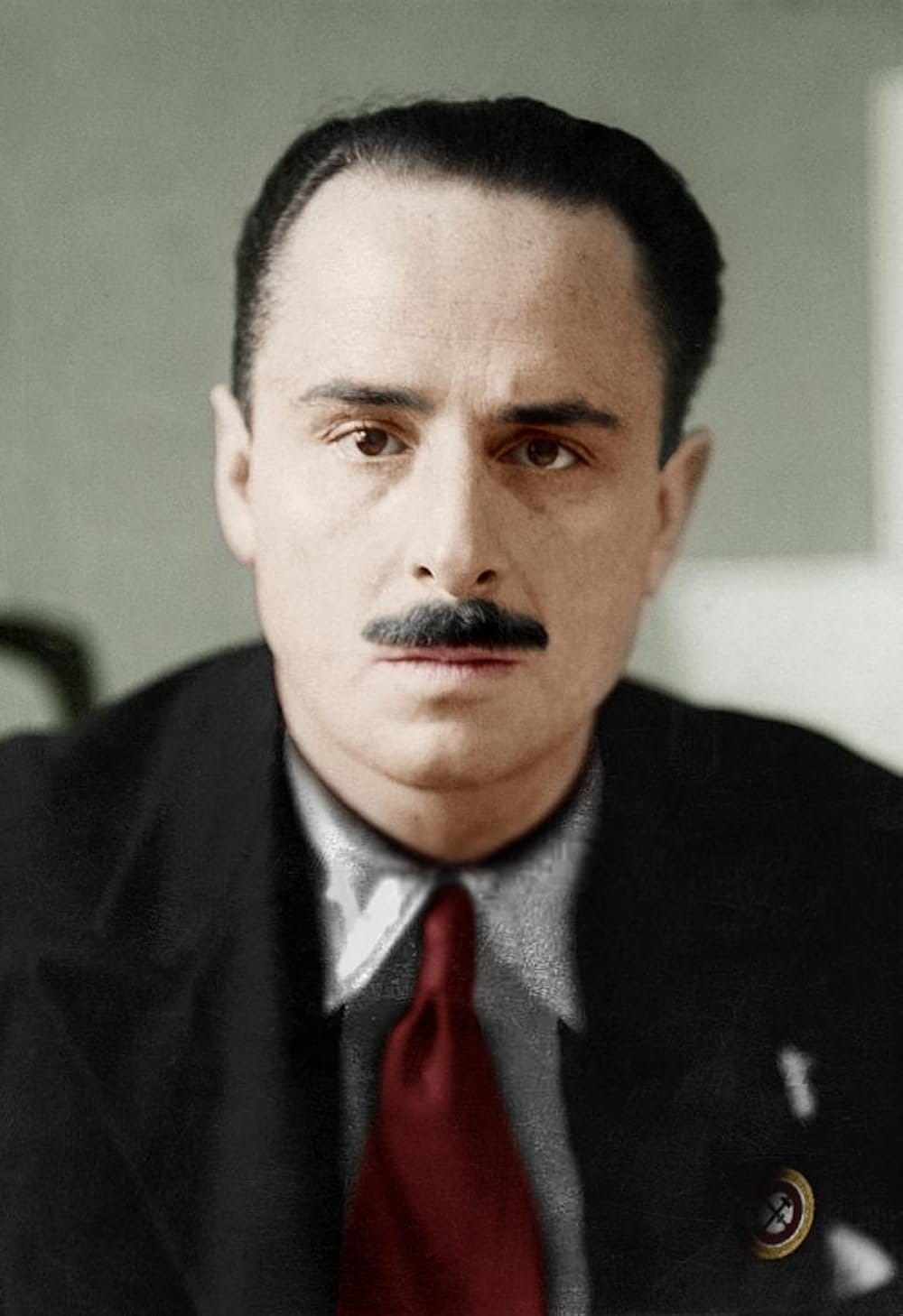Subtitled as “A Bedtime Story,” Michael Arlen’s 1934 novella Hell! Said the Duchess is a rare volume. Why? Well, the answer is that it is the very first book mentioned in Karl Edward Wagner’s 39 List. Hell! Said the Duchess tops the list of The Thirteen Best Supernatural Horror Novels. And for once old Karl was right, for Hell! Said the Duchess is indeed a supernatural novel with a twist ending that comes straight from left (hand path) field.
Michael Arlen (1895-1956) was born as Dikran Sarkis Kouyoumdjian in Bulgaria. He belonged to an Armenian merchant family that had fled to the Balkans in order to escape Ottoman persecution. Soon after young Dikran’s birth, the family once again moved, this time to the British seaside town of Southport. The future Michael Arlen (he legally changed his name in 1922 upon becoming a naturalized citizen) was reared in the posh environs of Malvern College and the University of Edinburgh. During World War I (where Arlen was placed under observation as a potential enemy alien) and the subsequent Jazz Age, Arlen became a fixture of the Modernist crowd. He hobnobbed with the likes of D.H. Lawrence and Aldous Huxley, plus, still using his birth name, Arlen published critical reviews in the New Age journal. His breakthrough novel—1924’s The Green Hat—became a bestseller and was filmed in Hollywood as A Woman of Affairs. Arlen’s work would continue to inspire stages, both big and small. In 1948, director Mario Zampi adaptation is ghost story “The Gentleman from America” into the film The Fatal Night. This same yarn would later become an episode of Alfred Hitchcock Presents in 1956.
Throughout much of his career, Arlen was known as a fashionable and eloquent dandy who prowled London’s streets in a gorgeous Rolls-Royce. Much like the American F. Scott Fitzgerald, Arlen was a genius of the Jazz Age, and he was at the height of his powers when the reading public and the literary world both were captivated by flappers, gin-swilling beaus, and the frivolous lifestyles of the smart set crowd. However, Arlen had another side to him—a side interested in the macabre and mysterious. The first example of this dark edge arrived in 1927 with the publication of Ghost Stories, a collection of supernatural mystery tales, including the ever popular “The Gentleman from America.”
Hell! Said the Duchess is the penultimate expression of Arlen’s taste for the grotesque, and at less than one hundred pages in length, it is a frightful tale that can be consumed in a single sitting. The story concerns a female serial killer on the loose in London. Known as “Jane the Ripper,” the unknown killer specializes in mutilation murders occurring after coitus. To be more specific, Jane mauls her men after sleeping with them first. Scotland Yard begins its investigation, and soon enough a suspect appears in the form of the beautiful Mary, Duchess of Dove. A known giver to charities and lover of peace and quiet and the Liberal Party, the Duchess is suspected because of a recent rash of strange behavior. Namely, according to her close associates, the genteel Duchess has been spending her nights slumming it in the worst dives in London. This alone is enough to sic the police on her. Then, when Superintendent Crust, Assistant Commissioner Basil Icelin, and Colonel Wingless discover a certain Dr. Xanthis Axeloe, the investigation takes a decidedly sinister turn. Prior to the Jane the Ripper murders, Dr. Axeloe was disbarred from practicing medicine after molesting and bedding his female patients. Dr. Axeloe is a “sadist” and “nymphomaniac,” according to Icelin. He is also described as an “Antichrist” in one police report.
So, when the trio discover the Duchess at Axeloe’s abode, it’s an understatement to say that the knowledge shocks them. Even more shocking is the Duchess’s behavior. First of all, the gentlewoman greets the police officers and former Army officer half-naked. Second, the Duchess speaks frankly about her sexual desire for some of the men accusing her of serial murder. “I’ve always…wanted you,” she whispers in one man’s ear. Finally, the most damning indictment of the Duchess’s sanity is when she begins speaking of ancient fertility gods:
“…son Pan and Ishtar have become one, have they? And Priapus and Venus? Well, maybe. The march of science, of course, is irresistible. But what kind of magic can it be, my love, that can change a man into a woman so desirous of love and so capable, as you will find out, of fulfilling her desire?”
Working herself into a lather, the Duchess forcibly straddles Icelin as a prelude to killing him with excessive lust. The once demure Duchess has become a sex fiend…but how? Hell! Said the Duchess rapidly explains itself as a demonic possession narrative. When Dr. Axeloe’s features begin to form on the Duchess’s face, Crust, Icelin, and Wingless realize that the erotic beast-man has taken control of the Duchess’s mind, and as a result, they strangle the woman and burn the doctor’s house down. However, there is another possible reading. The Duchess is not really Mary, but rather a demonic doppelganger under Dr. Axeloe’s control. Furthermore, Dr. Axeloe really isn’t a doctor, but rather the human incarnation of an elemental spirit. The possibilities are all there, but the answer is the same—unearthly foulness is afoot.
Hell! Said the Duchess is a strange, little romp. The novel is written with whimsy, and the whole thing really does come off as a great big joke until the very end. Another fascinating facet of this brief novel is the fact that it is set in an alternative Britain. In this world, Sir Oswald Mosley’s British Union of Fascists have won enough votes to enter into a coalition with the Conservative Party. The Conservative-Fascist government places Mosely into a position of supreme authority, and as a result, Britain is rocked by a series of bloody riots, including one Communist revolt in July that destroys the Duchess’s manor. This political-satirical quality marks Hell! Said the Duchess as arguably the most unique entry on Wagner’s 39 List, and although Arlen writes with a biased pen (he is no Mosely supporter), his summation of 1930s Britain is charming in its acidity.
Hell! Said the Duchess is a fun read and a bizarre read and a somewhat disturbing read. Alren does not totally explain the horror here, which is appreciated, and one cannot help but enjoy the boldness of such a sexually risqué novel. Also, given that this book was published long before William Peter Blatty’s The Exorcist, Arlen should be given kudos for making such fare mainstream. Furthermore, sex demons are not all that popular now, and they were even less popular in 1934. Hell! Said the Duchess definitely earned its spot on the KEW List, and few other horror novels can claim to be this eccentric.
4.6 out of 5.





